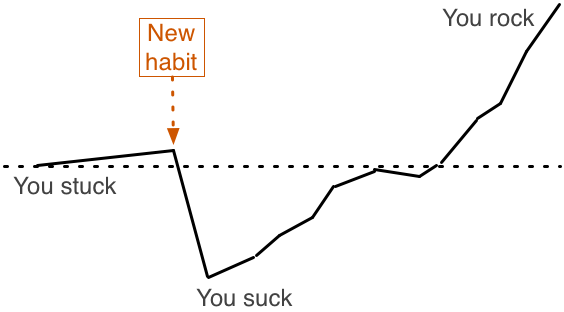Before starting to implement any GROWS Method® ideas, you need to get everyone to agree that they will try their best to make it work. Instead of assuming implicit agreement, or mandating agreement, actually get the folks involved to publicly commit that they will try.

Everyone understands and agrees that real change is a process, takes time, and requires patience and commitment at all levels in your company in order to be effective.
✓ Critical ❑ Helpful ❑ Experimental
Do the following steps to get started.
An organization is a group of folks working together, and the GROWS Method® makes it easier for everyone to work together to achieve their overall goals.
The GROWS Method® is for everyone in an organization. It’s not just for leaders, or just for developers. It’s a corporate strategy for generating intellectual property in frequently changing, partial-knowledge environments. And because it involves everyone, everyone needs to agree that they will give their honest, best effort.
Transparency and accountability go both ways, from leadership to team members and back, throughout the organization.
So what does Agree to Try look like? Everyone involved in The GROWS Method® needs to publicly:
It may sounds hokey and perhaps naive, but many “change initiatives” fail on this one simple point: explain clearly what we’re trying to do, and ask everyone to agree to try it, mess and all:1
… if there is no mess and no confusion, we are not seeing any real change, just a bit of singing and dancing to the latest music in the charts.
Even though the GROWS Method® is designed for the whole organization, that doesn’t mean you want to start with the whole organization all at once. That’s a guaranteed path to failure. In keeping with OneThingAtATime, chose one specific starting point.
A small, pilot team is a great way to start, and honors the SmallBitesAlways habit. You want that team’s leadership to be on board with the change, as far up as you can go; the higher the better.
You need a thin thread of agreement, right up the management chain. Just like the TracerBullets approach to thin, vertical slices of code, this forms a sort of management “tracer bullet.”
The idea of experiments in the GROWS Method® addresses common resistance, by proving value early and inexpensively. In order for that to work, all parties must enter in with at least an open mind.
You need at least one champion in the executive leadership to Agree To Try, so you can help foster and improve executive involvement.
Many people, especially outside of the development team, react negatively to any mention of change whatsoever — especially a change that tosses out the familiar comfort of a known Plan with firm dates and deliverables.
But for most organizations, those medium- to long-range, explicitly detailed plans are complete fiction. The inevitable deviation from the naive plan breeds hostility, distrust, and an ultimately negative environment for all parties. Instead of continuing to treat guesses as fact, we want to move toward an organization that deals with facts as they happen.
That’s much easier said than done, and requires a deep commitment to Agree to Try with the realization that things will be messy and fluid. Of course, things are already messy and fluid. Better to recognize that and use the correct tools to deal with it instead of trying to ignore change and feedback:2
“It may look like a crisis, but it’s only the end of an illusion.”
You’re doing it wrong if you or your organization…
See also the discussion of Pathological and Bureaucratic cultures in InformationFlow.
If any of these descriptions are true for your organization—or for yourself—then you’re not ready for The GROWS Method® (or any change) yet.
Pit departments or projects against each other.
Demand agreement without supporting transparency or accountability from leaders or team members.
Any of the following statements by stakeholders is a warning sign that perhaps you are at Stage Zero, and not ready to begin:
(Create Psychological Safety) Next→
Implementing Beyond Budgeting (Bogsnes, 2016) ↩
Secrets of Consulting [(Weinberg, 1986)] ↩
Follow @growsmethod in the Fediverse, or subscribe to our mailing list:
Sign up for more information on how you can participate and use the GROWS Method®. We will not use your email for any other purpose.